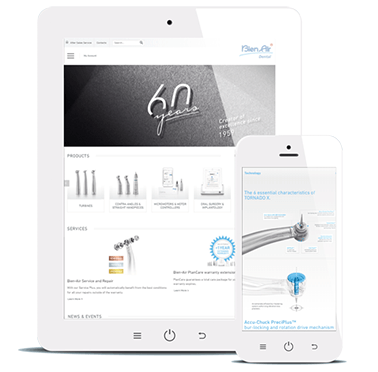In recent years, companies have been forced to digitize. The need for change is being driven by a number of factors. These include the digitization that is affecting almost every industry, the ever-increasing volume of data, growing customer demands, and the fear of a more digitally aware competition.
The global pandemic has been a game changer, highlighting the importance of IT infrastructure modernization. It has pointed out digital literacy as the foundation for competence in a wide range of business functions. COVID-19 has rendered manual and semi-digital processes obsolete.
The need to work from home has forced businesses worldwide to transform. This has led to the discovery of gaps that IT departments were aware of but had not yet addressed. The rapid pace of digital transformation has created a higher demand for developers. Organizations are challenged to implement solutions that enable them to continue operating while dealing with staffing shortages. -code platforms have become an excellent solution for many organizations.
What is Low-Code?
Low-Code is a platform that helps accelerate the delivery of applications, supporting the digital transformation of businesses. The drag-and-drop process modelling makes it possible to create prototype applications for rapid deployment.
Low-code is a platform for building an application that minimizes the need to manually write code. Low-code tools are intuitive and enable users to create different types of user applications, such as mobile or business applications, without requiring extensive knowledge of programming languages.
These tools are becoming increasingly popular as an alternative to traditional software development methods. They allow both professional programmers and non-technical users to build even the most complex applications, meeting business needs for rapid development, process automation, and accelerating the digital transformation process.
What are the statistics?
The global low-code technology market is expected to grow by approximately 23% in 2021 compared to the year before, as stated by Gartner. This trend is likely to continue in the future with the advancement of technology. By 2025, low-code technology is predicted to reach 75% of the market.
One of the significant benefits of using low-code technology is the cost-saving factor. The intuitive nature of these tools can be used by individuals with no prior experience in programming. According to IDC, the global population of low-code developers is expected to grow at a significant rate of 40.4% between 2021 and 2025.
Low-code, as the name suggests, requires a basic knowledge of code, but the idea of maximum simplification of this type of tools makes them easy to use even for a novice programmer or a lover of new technologies. The platform uses a modular approach to programming. It is a combination of ready-made blocks and functions for designing websites or applications. They are widely used, thanks to the many possibilities for integration with older tools and third-party applications.
Contact us to learn more about low-code design.
Low-code platform features
Visual modeling tools. Low-code platforms come equipped with visual modelling tools, which enable users to present information in a way that is easy to understand. These platforms use built-in components and can be used by non-technical business users, as well as professional programmers. Compared to traditional coding, it is quicker to build an application using visual methods and models.
 Custom OOTB (out of the box) functionality
Custom OOTB (out of the box) functionality
OOTB stands for "out of the box", a pre-built function that eliminates the need to create core application modules from scratch. Some low-code platforms offer data management modules or application modules related to customer service or sales process management.
"Drag and Drop" This is one of the most important and, at the same time, the most useful features that allows for a fast development process. This functionality is helpful for both novice and experienced programmers.
Reusing
One advantage of utilizing out-of-the-box (OOTB) functionality in low-code programming is the availability of pre-configured modules for building applications. These modules possess standard features that can be used across multiple applications, enabling developers to create different solutions faster.
When selecting a platform, one of the crucial aspects to consider is the ability to reuse pre-existing or newly developed modules, plug-ins, and whole applications. Low-code platforms come with a valuable feature of cross-platform accessibility and compatibility on multiple devices. This means that not only can you use the tool on any device running the main operating system, but you can also create applications that run on other platforms and devices.
Scalability
Low-code systems are able to create new applications that can cope with increasing numbers of users as the business evolves. Monitoring and reporting Low-code applications can monitor workflows and processes, and also track the performance of other applications.
App lifecycle
Low-code tools streamline software lifecycle levels, such as debugging, implementation, and testing. Users have access to information about the applications created and their development. These tools allow you to revert to the previous version if you need it to manage the lifecycle of your application better.
What kind of applications can you create?
Customer engagement applications
Customer engagement applications are large-scale applications that cater to a wide range of business tasks for organizations. These applications can either directly engage customers or enable complex business processes to support more effective and personalized engagement. They serve as a direct marketing channel for the brand, allowing products and services to be displayed in various ways.
These applications increase visibility and help build brand awareness effectively. Moreover, they provide a personalized experience that supports an emotional connection with the customers. They allow users to create wishlists, shopping carts, and track loyalty program progress. Additionally, they support retargeting, i.e., encouraging users to return to abandoned shopping carts or place new orders.
Applications that optimize business performance
Applications that optimize business performance are software applications designed to automate processes and improve the efficiency of operations. These applications offer numerous benefits to businesses, including cost and error reduction through automation.
They can handle tasks such as claims processing, supply chain management, invoice processing, equipment tracking, order management, and other essential business processes. These applications are integrated into the base systems and replace older systems that only support a selected part of a business process.
 Business Processes
Business Processes
Business processes are essential for managing tasks of any level of complexity and automating operations across different departments. Low-code platforms provide tools to enhance the process of managing basic information by collecting data from various departments, such as production, logistics, warehouse, accounting, sales, or marketing, into one system.
These platforms also support the internal purchasing process of equipment, goods, or raw materials. The entire process is typically complex, time-consuming, and requires the collection of vast amounts of data from multiple departments. Low-code platforms can facilitate this process by enabling the creation of the right workflow and defining steps or data based on historical or current data.
User interface, data model, and business logic
Configuration of models for web applications and mobile devices. The intuitive drag-and-drop interface allows you to set up the business logic of the workflow, to define the steps, and assign people and tasks. Low-code tools enable changes to be made at any stage of the process.
Solutions based on artificial intelligence
Artificial intelligence-based solutions refer to applications that utilize machine learning algorithms to minimize manual operations and accelerate performance. With low-code, you can swiftly develop tools that directly impact the way your business functions and your profitability. This means that any production stagnation, oversupply, or customer pressure can be quickly resolved. Business owners have multiple options after identifying and setting business goals.
Internet portals
Internet portals are a popular way for customers to interact and connect with companies. Low-code platforms make it easy to create portals with user-friendly interfaces without the need for manual HTML coding. Low-code tools are transforming the IT industry by allowing businesses to build applications and processes more quickly and flexibly.
They are a cost-effective alternative for both new and existing businesses, and offer the ability to integrate with ERP systems while providing customized business logic that meets specific company requirements. Manufacturers who use low-code platforms can benefit from simpler tools with minimal coding, making it easier to adapt to the demands of modern business.
Mobile apps
With the help of low-code approach, companies can create a variety of mobile applications that can display data and interact with customers. It is a comprehensive set of interrelated tools that facilitates the creation, delivery, and upgrading of applications. These tools work efficiently with both Android and iOS operating systems.
Applications for microservices
A single application that can be made up of several smaller components or services that can be deployed independently. Low-code is the most commonly used platform for creating these components based on microservices. It allows you to build applications quickly, improving performance and stability, while helping to modernize existing code in microservices applications.
Applications based on IoT
The Internet of Things (IoT) is a technology that involves combining the capabilities of sensors or microprocessors with web applications. These components can connect to the Internet or other communication protocols, collect data from their surroundings, communicate with each other, make decisions, and process data.
Low-code tools offer an efficient way to build such applications and automate objects and devices. Organizations can leverage low-code tools to streamline application development and deployment. Many industries are currently taking advantage of the potential of low-code tools.
Banks and other financial institutions
To meet the demands of today's customers, banks need to provide seamless and uninterrupted digital services. If the onboarding process is slow, inefficient, and unfriendly, and the bank's application or website does not meet the needs of the consumer, they will look for alternatives sooner or later. In addition to creating the right products, services, and digital experiences, it is equally important to deliver them as quickly as possible. Low-code platforms also help banks meet the need for speed.
According to Forester, low-code platforms allow digital products to be delivered 10 times faster than traditional programming techniques, freeing up one of the most valuable resources – time; just as automation frees employees from routine, tedious tasks, low-code platforms free programmers from tedious manual work.
Public sector
State and local governments, as well as universities, are leveraging the benefits of low-code platforms to ensure high-quality services. These tools enable them to emphasize efficiency and the security of sensitive data. Such applications make it easier to comply with strict standards and share information internally.
 Marketing and HR
Marketing and HR
Low-code applications are designed to enhance fundamental business functions, including HR processes, marketing automation, and financial data processing. By utilizing appropriate tools, you can eliminate the need for manual input of new or potential information obtained from a marketing campaign or contact form. The built-in applications facilitate the creation of automated workflows by users.
Logistics & Supply Chain
Supply chains are becoming more complex and unpredictable. This mainly includes storage and transportation of goods. The greatest business value of the application is the reliable tracking of raw materials, components, and finished products from the assembly line to the warehouse. Low-code platforms fill that need. They provide an opportunity to address many supply chain challenges in the areas of
- Responsive application development - collaboration with many supply chain participants,
- Workflow and business process mapping automation – simple drag-and-drop modelling.
Efficiently integrate and modernize legacy versions. The low-code platform provides all the basic capabilities needed to optimize the supply chain:
- Optimization and on-time management of inventory,
- Different levels of supplier visibility,
- Mitigation of risks,
- Combining complex processes and applications within and between enterprises.
Conclusions
Low-code development platforms have revolutionized application development. They offer several benefits, including simplifying, democratizing, and accelerating the digitization of businesses.
Why use the low-code platform?
- Faster time to market and app delivery - Low-code platforms provide a rich ecosystem of out-of-the-box code snippets, templates, forms, and reports, as well as built-in connectors, enabling you to get your apps up and running in a fraction of the time it would take to develop them from scratch.
- Lower costs - Low-code tools require minimal programming skills, which means you can bridge the IT gap that many organizations face. As a result, business owners do not need to hire qualified IT professionals, which can help reduce costs.
- Improved customer experience - Low-code platforms quickly adapt to market changes and customer needs by rapidly deploying existing applications and updates in line with the latest CX trends. Enhanced security - Low-code systems include essential security features like administrative tools, access control, and threat assessment.
- Elimination of shadow IT - Low-code solutions allow non-technical users to build their own applications without the need for IT, eliminating the threat associated with the installation of programs and applications on company computers without the knowledge and consent of the supervisor. This helps to prevent the risk of exposing confidential data to third parties.
- Seamless Business and IT Collaboration - Low-code platform provides essential functionality for enterprises looking to automate their operations in a cost-effective and timely manner. With out-of-the-box features, an intuitive interface, and advanced capabilities, it allows you to use the same programming language to build applications of any complexity on one platform.
- Accelerated Digital Transformation - Organizations must automate processes to keep pace with today's demands and changing business environment. Low-code platforms provide the essential technology for organizations undergoing digital transformation, helping them accelerate their lifecycle and innovate faster.



 As mentioned above, clients from all over the world rate our comprehensive approach to project implementation and business consulting, which is why Clutch has considered uss a leading eCommerce Software Development Team in Poland. That is, however, not all.
As mentioned above, clients from all over the world rate our comprehensive approach to project implementation and business consulting, which is why Clutch has considered uss a leading eCommerce Software Development Team in Poland. That is, however, not all. In our daily work, we help to develop our clients' businesses. Their trust and effective cooperation make us grow as well. In January, 2022, the new edition of the Forbes Diamond Award report was published and we were proud to be listed among the fastest-growing Polish enterprises in this prestigious report. And as we help to develop our clients' businesses by doing our utmost best, their thrust and cooperation mean a lot. Indeed, we will only continue to grow together!
In our daily work, we help to develop our clients' businesses. Their trust and effective cooperation make us grow as well. In January, 2022, the new edition of the Forbes Diamond Award report was published and we were proud to be listed among the fastest-growing Polish enterprises in this prestigious report. And as we help to develop our clients' businesses by doing our utmost best, their thrust and cooperation mean a lot. Indeed, we will only continue to grow together!
 Custom OOTB (out of the box) functionality
Custom OOTB (out of the box) functionality Business Processes
Business Processes Marketing and HR
Marketing and HR







